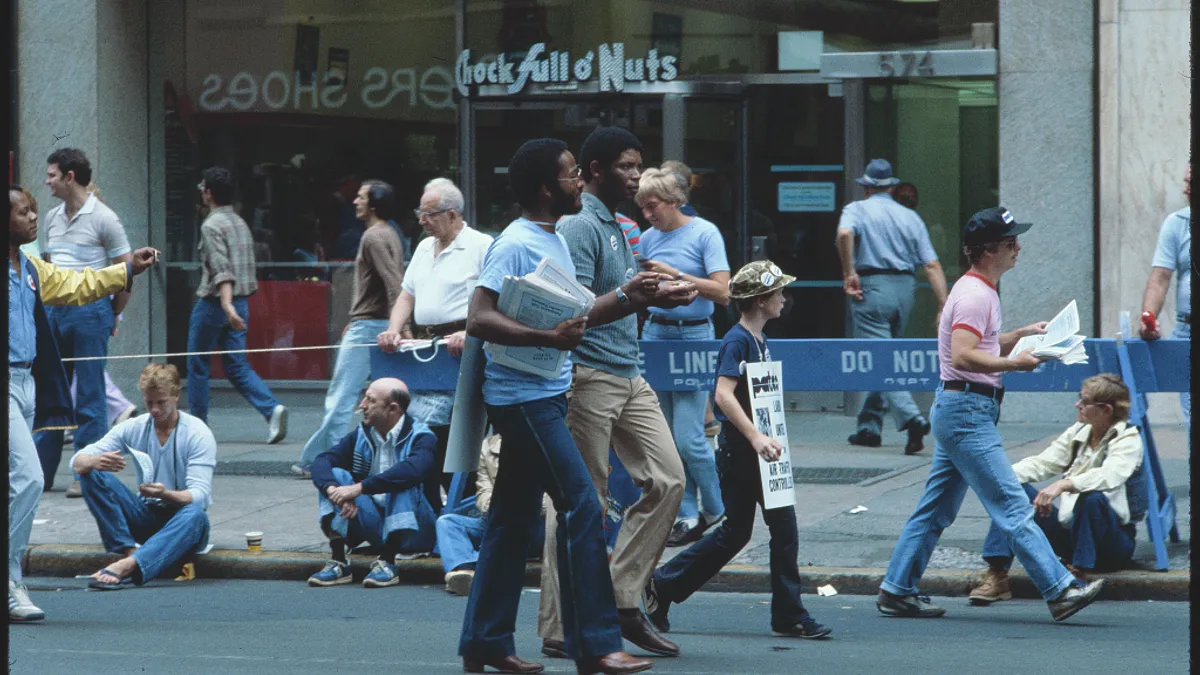Labor is top of mind, even for people who aren’t HR professionals. Everyone’s favorite TV shows and films are delayed due to the SAG-AFTRA strike. Due to the UPS deal, interest in Teamster-wrought six-figure salaries spiked. As PSLs froth on the tongue, Starbucks has become synonymous with “embattled unions.“
Following up on these developments, the U.S. Treasury Department published an Aug. 28 report illustrating the economic benefits of unions. Middle-class workers “reap substantial benefits from unionization,” the agency’s Office of Economic Policy reported, with boons such as predictable scheduling, grievance policies and boosted retirement plans.
“Competition means workers at nonunionized firms see increased wages too. Heightened workplace safety norms can pull up whole industries,” the Treasury said in a fact sheet summarizing the report.
And as uncomfortable as employers and their gatekeepers may be with the “u” word, it’s becoming impossible to ignore.
Labor Day 2023: A pivotal time in labor history
Many Americans get to celebrate Labor Day due to the age-old tradition of workers protesting the conditions and parameters of their jobs. The 1894 Pullman railroad worker strike, led by Eugene V. Debs, shut down the U.S. and its economy — prompting then-President Grover Cleveland to declare the first Monday in September a national holiday.
Not only do this year’s festivities take place during a pivotal moment in U.S. worker history. They also coincide with the celebration of the 60th anniversary of the March on Washington, where Martin Luther King Jr. gave his ubiquitous “I Have a Dream” speech.
Led by Bayard Rustin and A. Philip Randolph, hundreds of thousands of people walked for racial equality and equity on Aug. 28, 1963. One of the core concerns of the March on Washington for Jobs and Freedom, the event’s formal name, was disproportionate unemployment of Black workers.
The pulse of labor and union attitudes in America
The groundswell of pro-worker sentiment coalesced as early as 2022, with the seeds arguably planted by the combined disruption of COVID-19, the workplace chaos that ensued, the Great Resignation and an ongoing tug-of-war between employees and employers.
Almost 60% of American adults believe that the sharp decline in union participation over the past several decades is “somewhat” bad or “very bad” for the country, according to a 2023 Pew Research Center report.
Even so, data from the U.S. Bureau of Labor Statistics, the rate of union membership declined from 10.3% to 10.1% between 2021 and 2022. BLS noted that more people entered the workforce between the two years, though, which reduced the amount of people in the U.S. workforces covered by unions.
Where do we go from here?
Union approval continues to be at record highs. A recent Gallup report found that 67% of Americans approve of unions, and 72% said they sympathize with television and film writers — as opposed to the studios — during the ongoing Hollywood strikes.
Leading up to Labor Day 2023, the National Labor Relations Board has also been exceptionally busy. In the last weeks of August, the NLRB widened the definition of protected activity, clarified its “anti-union animus” standard and cleared the path for unions to represent workers, sans elections in new rulings. Guidance from NLRB General Counsel Jennifer Abruzzo’s memo on how “captive audience meetings” violate federal law just withstood its second challenge in a state court, Bloomberg Law reported.
Combine these developments with high interest in and enthusiasm for unions, and it’s reasonable for HR to assume that workers may seek to have needs addressed by unions if left unmet by employers.
In some ways, the Treasury’s report suggests that the undeniable reality of unions does not have to be a contentious or negative topic for employers. For example, the agency’s researchers noted that “income inequality often feeds back into inequality of opportunity” — which can prevent disadvantaged talent from accessing the necessary resources to acquire job skills.
Additionally, unions can “boost businesses’ productivity by improving working environments and by giving experienced workers more of an input into decisions that design better and more cost-effective workplace procedures,” Treasury researchers added.













